|
Art
Gallery of Silverware 18th, 19th and 20th Century
|
|
A
Selection of antique items from Private Collections in Europe and
around the world
|
|
Art
Gallery of Silverware 18th, 19th and 20th Century
|
|
A
Selection of antique items from Private Collections in Europe and
around the world
|
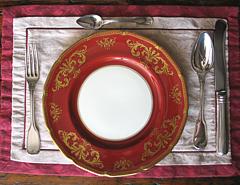
|
|
||
|
Antique Flatware Set
Switzerland, circa 1890 |
* Antique hand-chased Solid Swiss & German
Silver 800 (800/1000) *
|
This canteen / set of 24 pieces for 6 Persons contains the following items:
6 Dinner Table Forks (Swiss - 21 cm or 8 1/4 in.)
6 Dinner Table Spoons (Swiss - 21,5 cm or 8 1/2 in.)
6 Dinner Table Knifes (Swiss - 26 cm or 10 1/4 inch, with carbon Steel
blades and Hollow Solid Silver Handles)
6 Coffee Spoons (German - 14,8 cm or nearly 6 in.)
1 old Storage Box for the complete Set
Total weight including knifes is ca. 1580 gr ( about 51 Ounces) - Silver weight is ca. 1133 gr. (about 36 1/2 ounces). These items have been cleaned and polished (by hand), but a few dark age spots might be still visible as well as some scratches from use - as usual with Antique Silverware. One knife shows a dent on the handle. Blades of Knifes show signs of use, but are still quite good for their age. In contrast to Stainless Steel blades these Carbon Steel Blades can be sharpened. This is why several leading Silversmiths still today use Carbon Blades for their new Flatware. Tines of Forks are very good for the age with little wear only. The surface of the Forks and Spoons show a bright "Butler Luster" which can only be achieved with careful cleaning by hand over a period of more than a century.
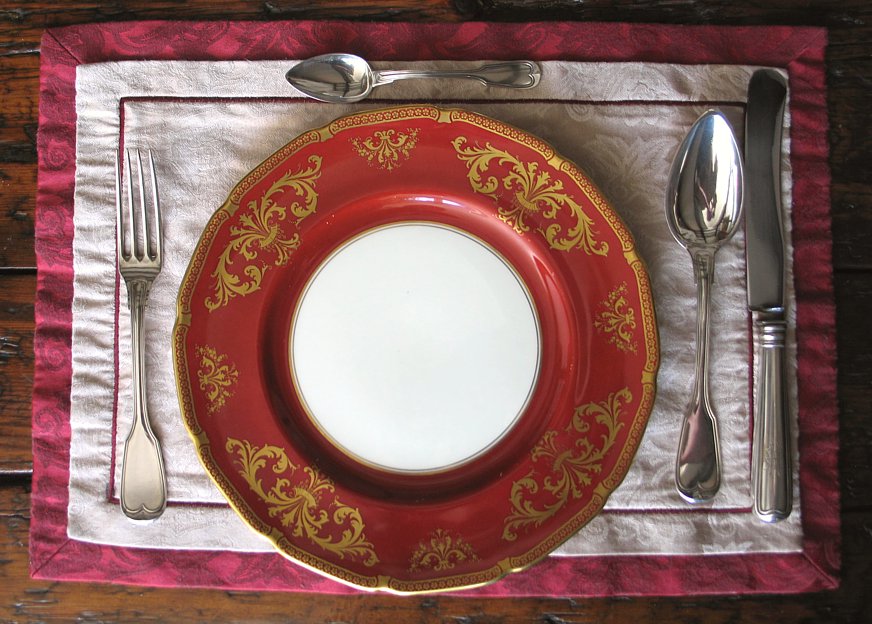
|
|
Antique Swiss Solid Silver Flatware Set
for 6 Persons with Cutlery Box
- Go back to the page
Silver for Sale - |
Presented by the FineArtEmporium in Hamburg.
Following more photos are shown:
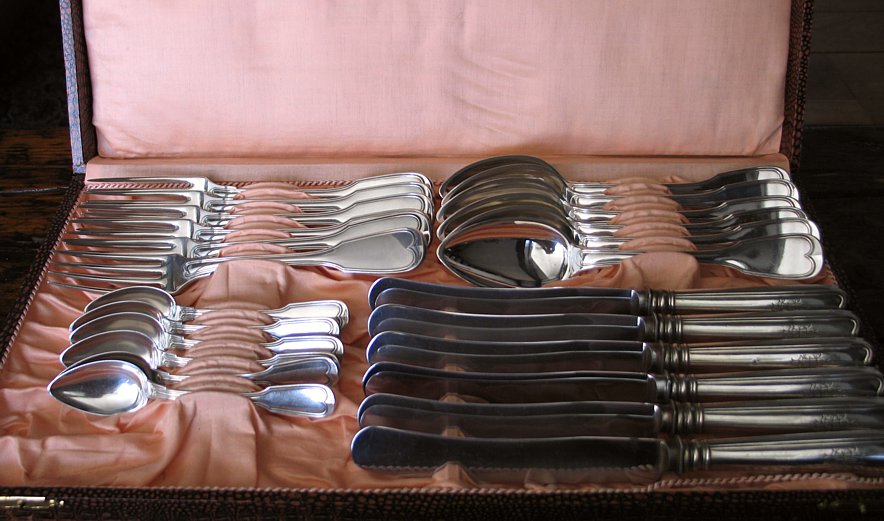
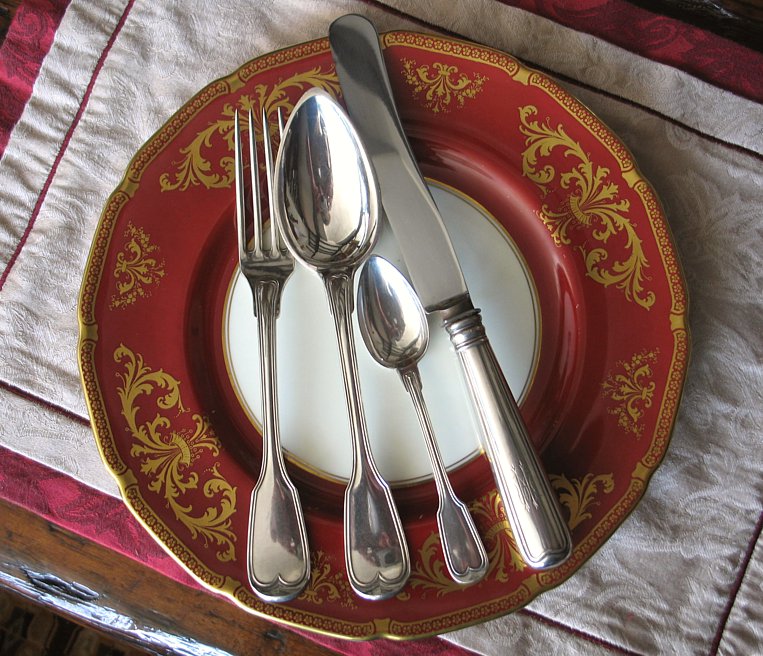
The more sharp-ending Bowl Form at the Table and Coffee Spoons is a typical
feature of 19th Century European Silver Flatware, in the 20th Century the Bowls
became more round.
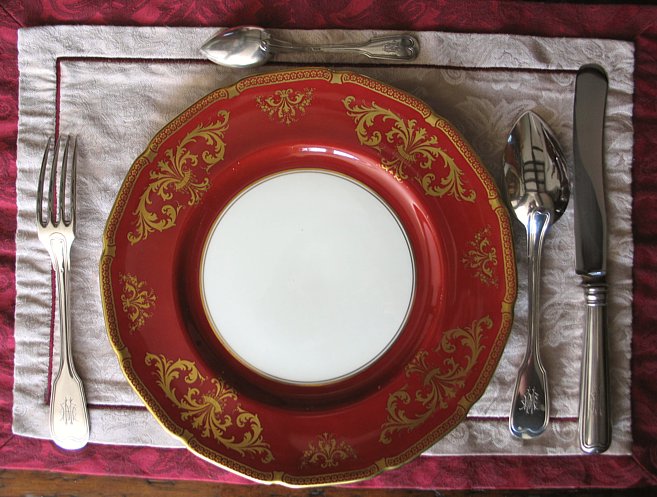
The pieces have a calligraphic decorated (unreadable) monogramm
on the backside as it was traditionally done in France and the french-speaking
parts of Switzerland so if you set your table in the usual fashion - as in America,
England, Germany, Scandinavia etc. - with the tines UP the monograms will NOT
show (see larger other photo with the plate below). If you set a French style
table with tines of forks and bowls of spoons turned down (see photo above)
the monogram will be visible. The knifes show it at both settings. Please note
here also the well done double-struck execution.
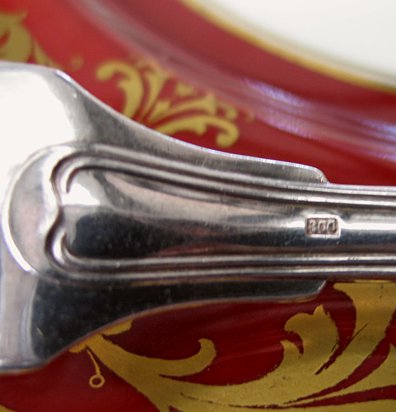 *
* 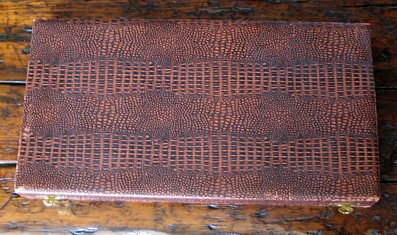 *
* 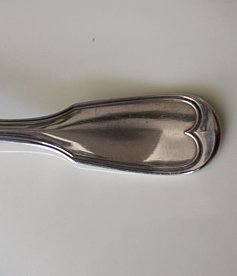
The left photo shows the Silver hallmark, the center photo is
of the cardboard Storage Box and the left photo is of an enlarged handle.

In German: Komplettes Silberbesteck
(Massiv-Silber 800 er) Augsburger Faden aus der Schweiz und Deutschland, um
1890 - für 6 Personen komplett mit altem Besteckkasten.